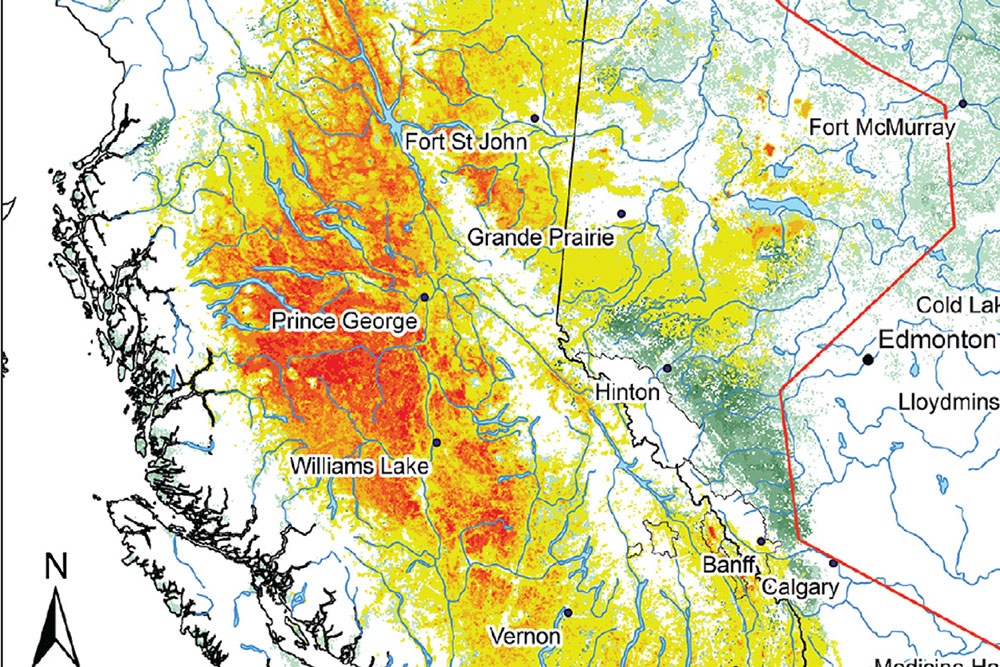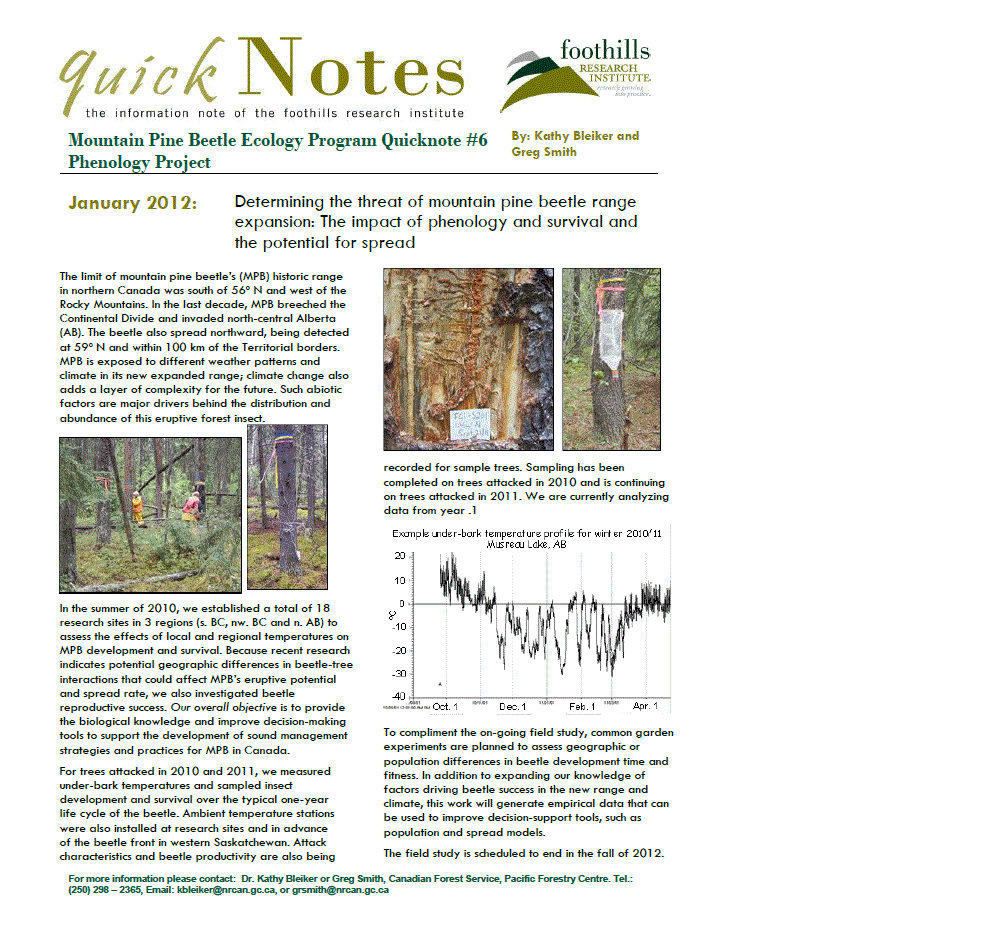
The mountain pine beetle in novel pine forests: Predicting impacts in a warming environment
Mountain pine beetle (MPB) has significantly expanded its range in western Canada since 1970 as a result of a warming environment.
This project will model the role of climate in future MPB outbreaks. Understanding how climate will contribute to mountain pine beetle spread is critical to managing risks.
Recently, Carroll et al. (2004) showed that the mountain pine beetle (MPB) had significantly expanded its range in western Canada since 1970 as a result of a warming environment. These results, together with the extensive incursions across the Rocky Mountains into north-central Alberta by MPB since 2002, prompted Safranyik et al. (2010) to examine the potential distribution of climatically benign habitats in the boreal and eastern pine forests under climate change. Although they concluded that there was a significant probability of continued eastward expansion by MPB, they also concluded that confidence in their predictions was limited by lack of knowledge of (i) the productivity of MPB in novel pine forests, and (ii) the potential range of future climatic conditions derived from accepted greenhouse gas emissions scenarios.
The proposed research will utilize recent quantifications of MPB productivity in naïve lodgepole pine forests (Cudmore et al. 2010; Clark et al. 2010; A.L. Carroll unpubl. data) to modify an empirical model of the role of climate in the beetle’s outbreak potential (Carroll et al. 2004) and project distributions of climatically benign habitat under a range of future forest conditions based on accepted emissions scenarios (Coops et al., this proposal).
Objectives
Objective 1: Develop a model of the effects of climate on MPB populations that incorporates altered beetle productivity associated with novel pine habitats.
- Gather meta data from studies of MPB dynamics in novel pine habitats (Cudmore et al. 2010; Clark et al. 2010; A.L. Carroll, unpubl. data).
- Establish relationships between host-tree characteristics and MPB productivity in novel pine habitats.
- Modify existing model of MPB climatic suitability (Carroll et al. 2004) to incorporate new beetle productivity relationships
- Calibrate and validate modified model outputs against Alberta Sustainable Resources Development annual MPB productivity (i.e. r-value) surveys.
Objective 2: Projections of MPB climatic suitability under climate change in novel pine habitats.
- Apply the modified model of MPB climatic suitability to the outputs of future climatic conditions under different emissions scenarios derived by Coops et al. (this proposal)
- Overlay outputs of MPB climatic suitability derived from the climate change scenarios on projections of future forest conditions provided by Coops et al. (this proposal).
The project kicks off, led by Allan Carroll
BC model modified for the foothills region
The project finishes on time











